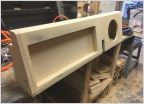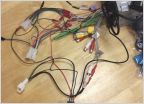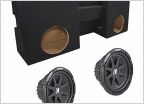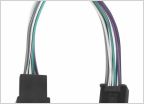-
Welcome to Tacoma World!
You are currently viewing as a guest! To get full-access, you need to register for a FREE account.
As a registered member, you’ll be able to:- Participate in all Tacoma discussion topics
- Communicate privately with other Tacoma owners from around the world
- Post your own photos in our Members Gallery
- Access all special features of the site
Improving my new speakers sound quality
Discussion in 'Audio & Video' started by CrippledOldMan, Dec 5, 2021.
Page 2 of 2
Page 2 of 2


 2017 Double Cab Stereo Install
2017 Double Cab Stereo Install Upgrading 2010 stock to Pioneer AVH-4200NEX : Parts List Check
Upgrading 2010 stock to Pioneer AVH-4200NEX : Parts List Check OK, all bullshit aside
OK, all bullshit aside Add a sub wiring harness
Add a sub wiring harness Mild upgrade for my factory sound system
Mild upgrade for my factory sound system










































































